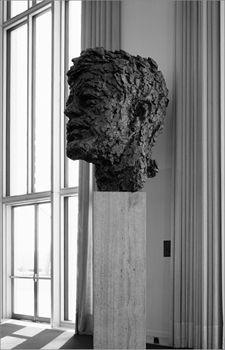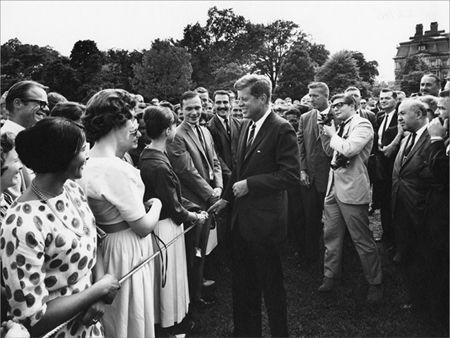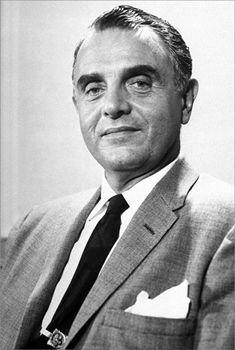Kennedy's Last Days: The Assassination That Defined a Generation (30 page)
Read Kennedy's Last Days: The Assassination That Defined a Generation Online
Authors: Bill O'Reilly

The Rocket Garden at the Kennedy Space Center.
[© Edwin Verin/
Shutterstock.com
]
A few days after the assassination, President Johnson proposed that NASA’s Cape Canaveral be renamed the John F. Kennedy Space Center. The Center remains central to the nation’s space program.

A sculpture of the head of the fallen president inside the John F. Kennedy Center for the Performing Arts in Washington, D.C.
[LOC, DIG-highsm-12385]
A Showcase for the Arts: The John F. Kennedy Center for the Performing Arts
The John F. Kennedy Center for the Performing Arts recognizes the role the president and his wife played in supporting the arts by offering artists a showcase in their televised concerts from the East Room, among many other efforts. Plans for a National Cultural Center began in 1958 when Dwight D. Eisenhower was president. During Kennedy’s term, he raised funds for the project and named his wife, Jackie, and Mrs. Eisenhower as honorary co-chairs of the institution. Since the Kennedy Center’s opening in 1971, it has been one of the most important cultural institutions in the country, presenting dance, ballet, chamber, jazz, folk, and multimedia concerts, theater, art exhibitions, and lectures for people of all ages. Kennedy Center honorees are named each year in a grand celebration that is shown on television a day or two after Christmas.

The John F. Kennedy Center is the busiest performing arts facility in the United States.
[Maisna/
Shutterstock.com
]
The dramatic building stands next to the Potomac River near the Lincoln Memorial.
A Ban on Nuclear Testing: Nuclear Test Ban Treaties
When John Kennedy took office, both the United States and Russia had enough nuclear weapons stockpiled to destroy the planet. As more powerful bombs were invented, they were tested by detonating them underground, in the ocean, or in space. Each explosion released radioactive particles into the atmosphere, which then fell to Earth as radioactive fallout. Radiation can permanently damage human cells and cause a wide range of illnesses, as well as contaminate the environment.
After the Cuban missile crisis brought the world very close to nuclear war, Kennedy and Premier Khrushchev began to talk about setting limits on testing. On August 5, 1963, the Limited Nuclear Test Ban Treaty was signed. It banned testing in space and underwater but allowed it underground. Kennedy struggled to get the Senate to approve the treaty. It was finally ratified and signed into law on October 7.
Efforts to pass a comprehensive nuclear test ban treaty that would prohibit testing in all environments, including underground, continue to this day. The United Nations General Assembly adopted a treaty in 1996, although not enough countries have signed it.
American Ambassadors to the World: The Peace Corps
On October 14, 1960, then Senator Kennedy gave a speech at the University of Michigan. He said:
How many of you who are going to be doctors are willing to spend your days in Ghana? Technicians or engineers, how many of you are willing to work in the Foreign Service and spend your lives traveling around the world? On your willingness to do that, not merely to serve one year or two years in the service, but on your willingness to contribute part of your life to this country, I think will depend the answer whether a free society can compete.
The Peace Corps traces its roots and its mission to this speech. It thrives today as a government agency devoted to world peace and friendship. Volunteers spend two years in developing countries providing education, environmental preservation, and communication infrastructure and responding to many other areas of need. Americans have served as Peace Corps volunteers in 139 countries since the program was founded.

President Kennedy greets 600 Peace Corps volunteers on the South Lawn of the White House, August 1962.
[JFK Presidential Library and Museum]
An Elite Fighting Team: U.S. Navy SEALs
In 1962, President Kennedy established the Navy SEALs to train for “unconventional warfare.” These specialists conduct hazardous missions that large, highly visible units could not. It was a team of SEALs who found and killed Osama bin Laden.

Kennedy talks with U.S. Navy SEALs, April 1962.
[JFK Presidential Library and Museum]
A Distinctive Hat: U.S. Army Green Berets
The Green Berets are U.S. Army Special Forces. They are also trained in unconventional warfare. Named after the soft green hats that Kennedy authorized, they specialize in foreign internal defense, hostage rescue, and counterterrorism.
EPILOGUE
A
FTER
J
OHN
F
.
K
ENNEDY WAS BURIED
and Lyndon Johnson took over as president, I began hearing a lot about Vietnam. Some of what I heard came from TV reports about the war and the demonstrations against it. By senior year in high school, older boys I knew from the neighborhood began coming back from Vietnam. Some came home injured. Some came home with altered personalities. I talked to some of them, and they each said the same thing: Vietnam was chaos; there was nothing good about it. I was about to graduate and maybe get drafted. Their stories scared me.
I went to college and so was deferred from the draft. It seemed like a good thing to do, and I studied and played sports, determined to stay in school. There was time for a few extra activities, so I started writing for the college newspaper,
The Circle
. That made me pay attention to politics more closely. But my heroes continued to be men who played sports: Willie Mays, the legendary Giants center fielder, and Jim Brown of the Cleveland Browns.
In 1969, my junior year in college, I joined a year-abroad program and went to London, England. Every day of that trip opened my eyes more. I was no longer just a suburban boy. I saw places I had only read about in textbooks. As a history major, that trip was like a candy store.
But one part of that year in Europe really made me who I am today. At the time, people all over the world were upset and angry with Americans, some because of Vietnam and others simply because they did not like our political system or the way we act: big, bold, and vocal. Kids made fun of my accent (New York), of American television shows (
American Bandstand
), and of my preoccupation with following that strange American game (football).
To this day, I can recall the feelings I had that year when people made fun of the U.S.A. All that anti-Americanism made me think a lot about pride and loyalty. I realized that I love my country fiercely even though it’s not perfect, and believe strongly in our system of government.

The author heads to England and beyond.
After college, I had to find a way to use my history major in a way that I hoped might help people. Warm, sunny Miami, Florida, was the location of a high school teaching job. It was tough, but I lasted two years, and think I did an okay job presenting kids with both sides of lots of issues in history. Then I started on the journey that has led to my television success today. Like most career paths, mine started small in places like Scranton, Pennsylvania; Denver, Colorado; and Dallas, Texas.
In 1977, I was an investigative reporter for WFAA-TV in Dallas. The Kennedy assassination was in the news again. The House of Representatives was investigating both the Kennedy and Martin Luther King Jr. assassinations again to see if there was evidence of conspiracy in either tragedy. When I looked at the story, I saw some loose ends. One was George de Mohrenschildt, the Russian-American businessman who had befriended the Oswalds.
* * *
I tracked him down at his daughter’s home in Florida. By some awful coincidence, the day I went to see him there, he had also gotten a request to be interviewed by the House Committee on Assassinations. As I knocked on the door, I heard a shotgun blast. He had killed himself. Later, the chairman of the House committee said de Mohrenschildt was a “crucial witness.” I often wonder what I might have been able to find out. To this day, his relationship to Lee Harvey Oswald is not fully understood.
